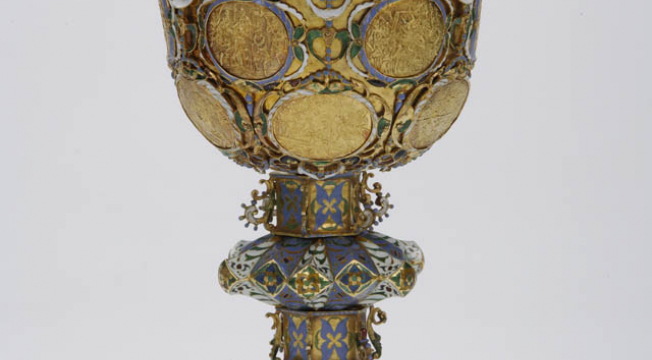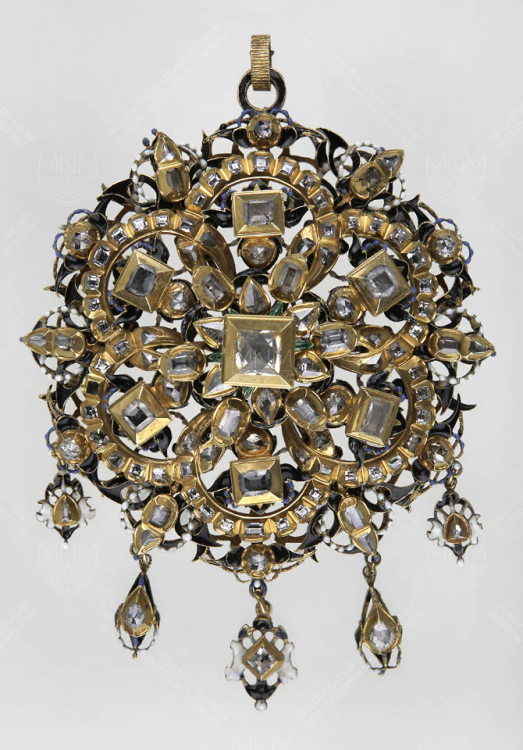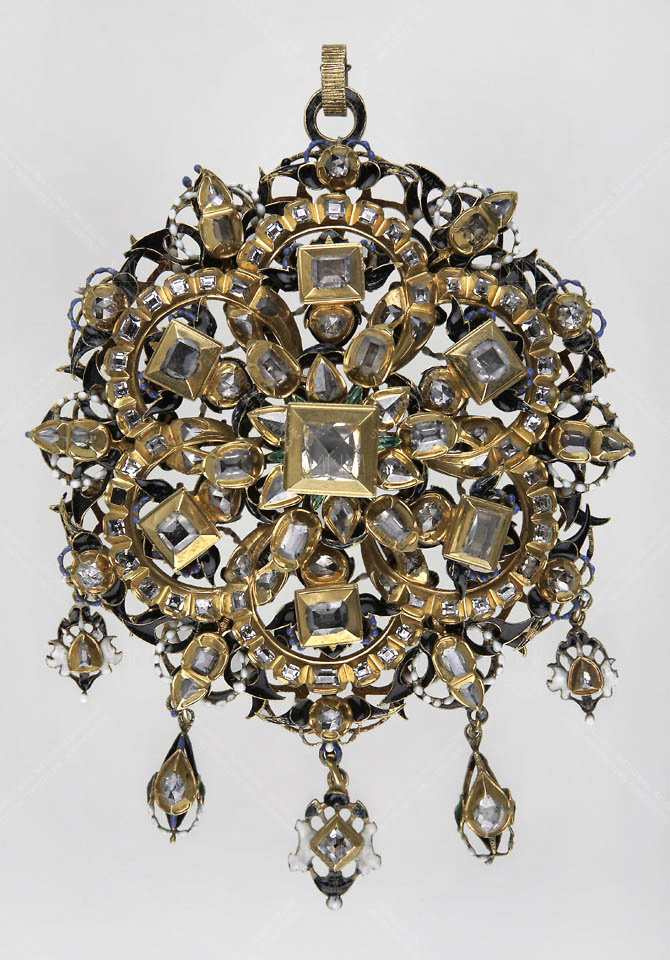
Room 7
The artefacts displayed on the right-hand side of this room evoke the Principality of Transylvania, which, although a vassal of the Ottoman Empire, preserved its independence in domestic policy and was often a counterweight to the power of Habsburg rulers. Under portraits of the ruling princes are displayed artefacts linked to their persons. Highlights of this room are gala attire once belonging to Catherine of Brandenburg (the spouse of Prince Gabriel Bethlen) and the Late Renaissance sarcophagus of György Apafi. On the left-hand side of the room, Royal Hungary (i.e. Habsburg-ruled Hungary) is presented: the show-cases highlight the successes of the Counter-Reformation, the significant mining operations in Upper Hungary, guild-based trades, and the craftsmanship of the Habaners.
INTERESTING FACTS:
The Habans were members of a German-speaking, Christian religious group living a communal life who, fleeing persecution, moved to Royal Hungary and later to Transylvania. For a long while, they kept to themselves the secrets of making their characteristic white-and-blue, tin-glazed ceramic ware (Habaner faience ware).
The Principality of Transylvania was the first country in Europe to guarantee freedom of religion by legal means.
Stephen Báthori, prince of Transylvania, was also king of Poland; he is regarded as one of Poland’s greatest kings.
George I Rákóczi, prince of Transylvania, presented a solid gold chalice to the Calvinist church in Farkas Street, Kolozsvár (Cluj-Napoca, Romania).
Before the Counter-Reformation, 90 per cent of Hungary’s inhabitants were Protestants.
The bowl of the Nádasdy cup was made from a single piece of red agate.













